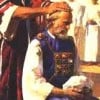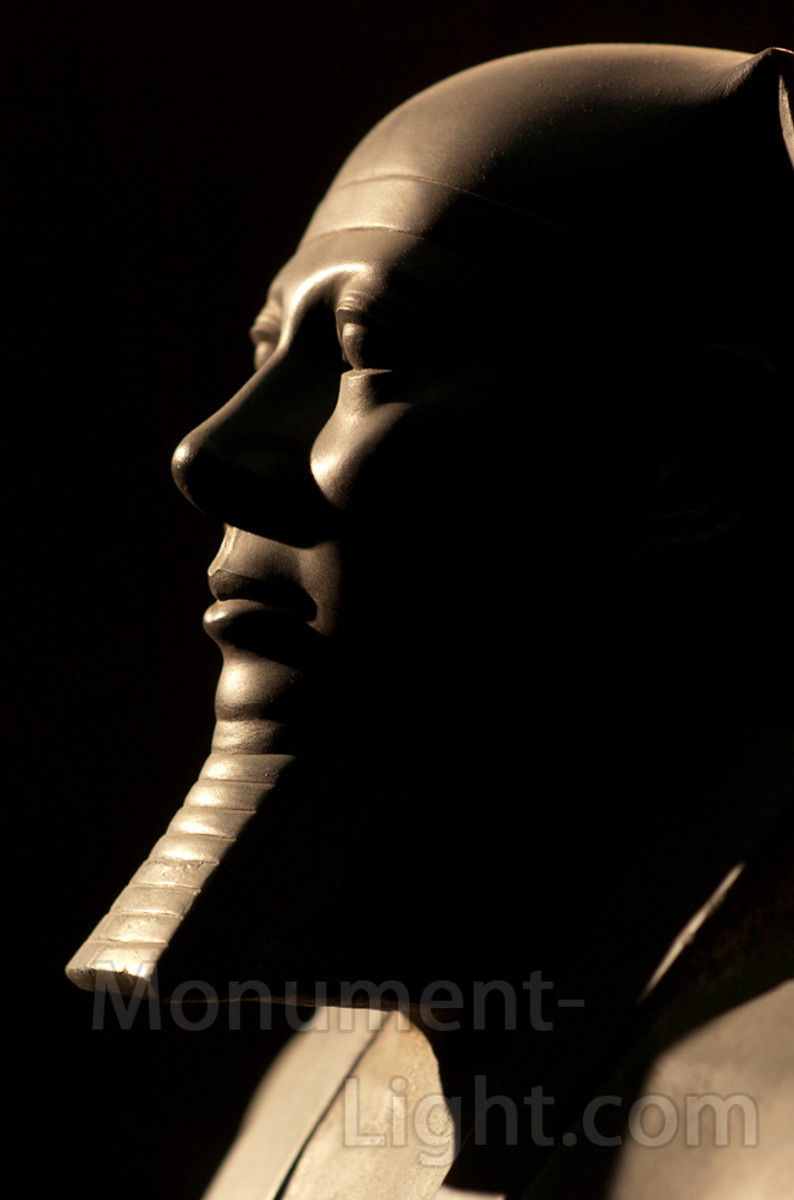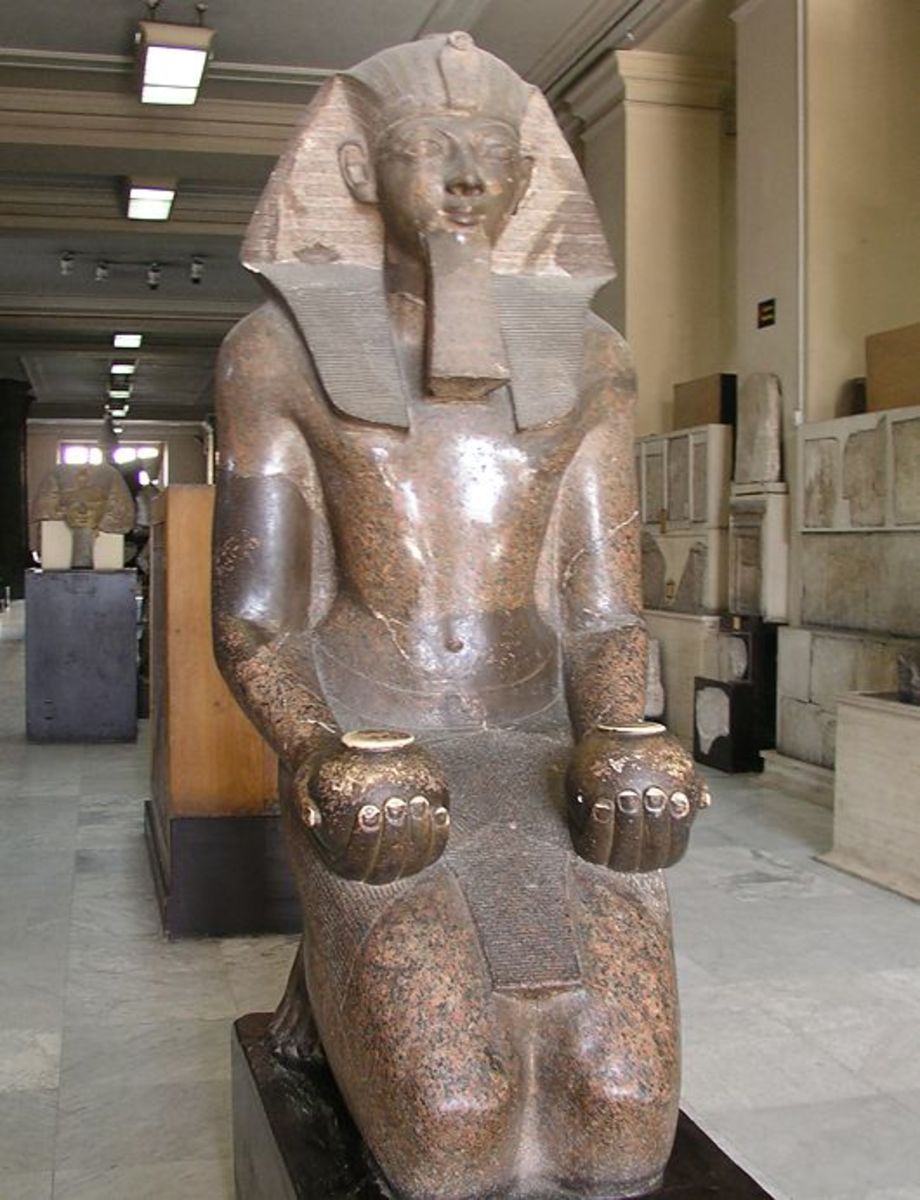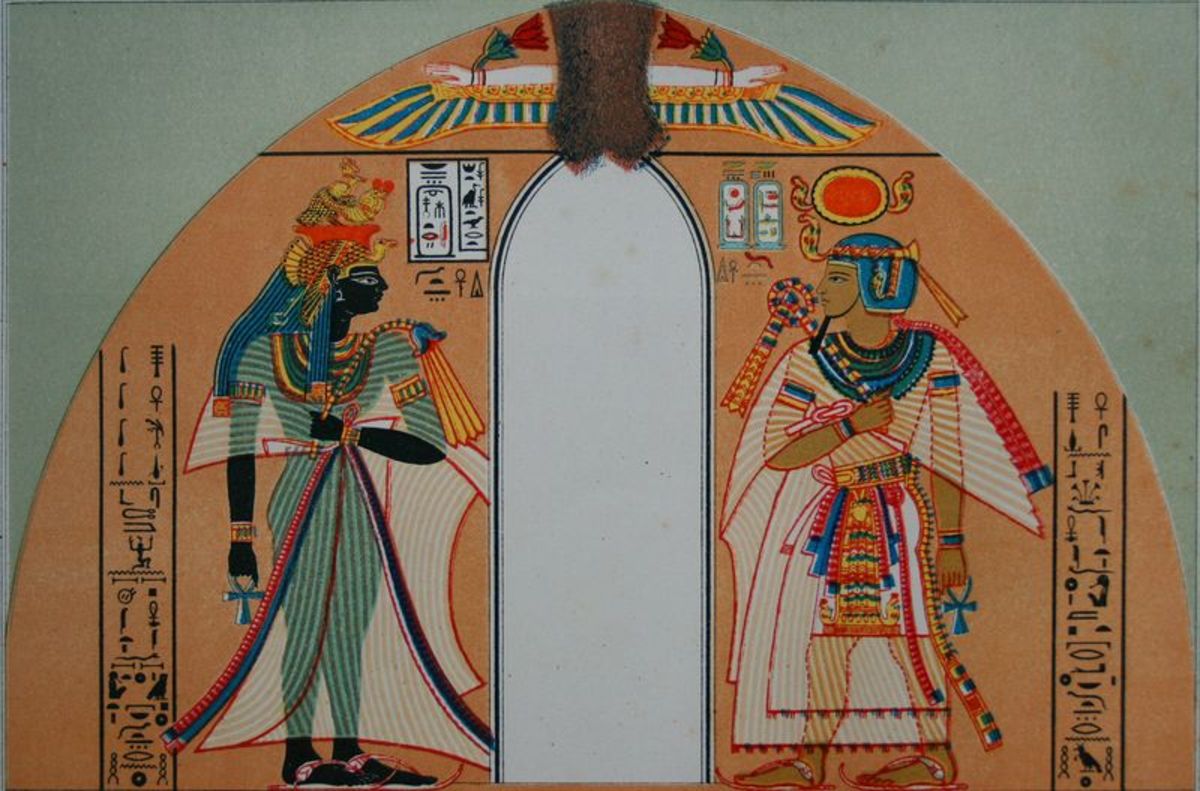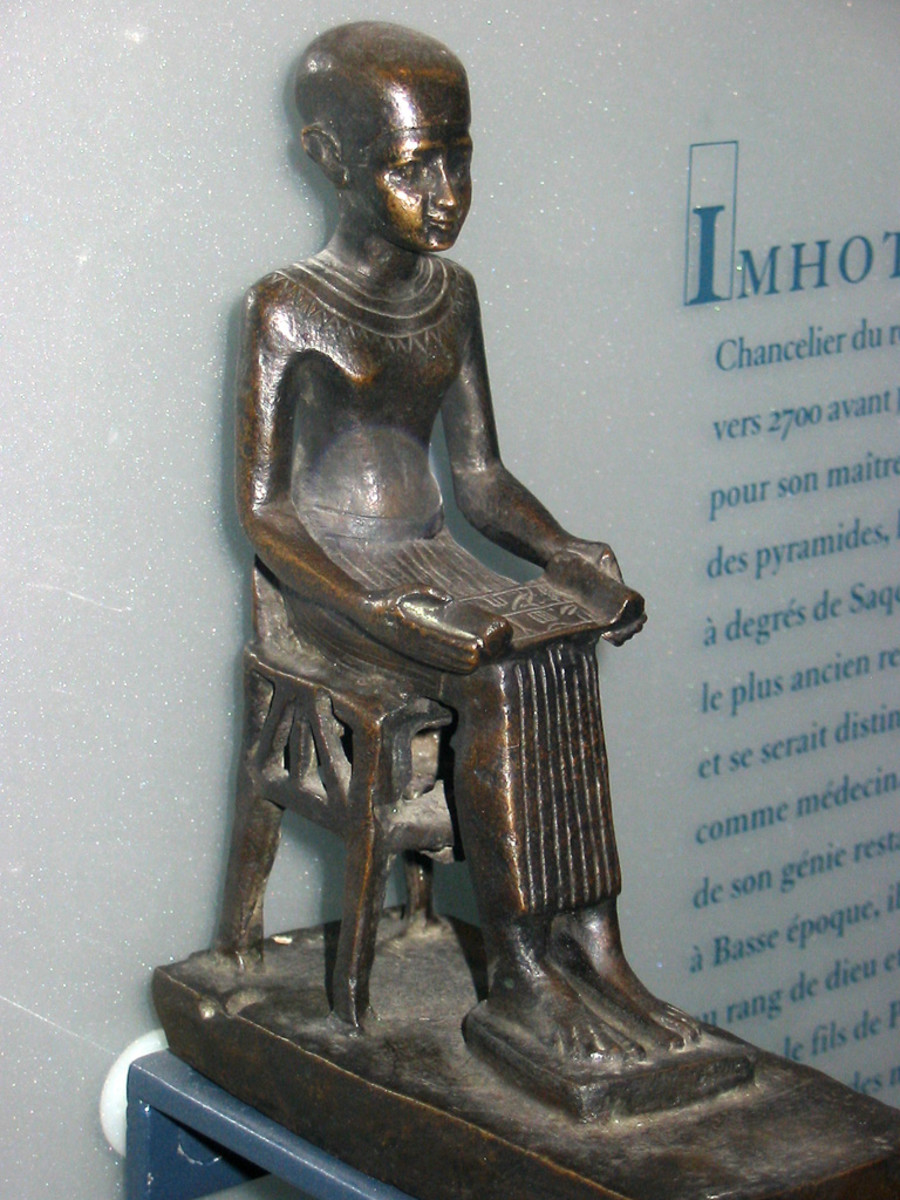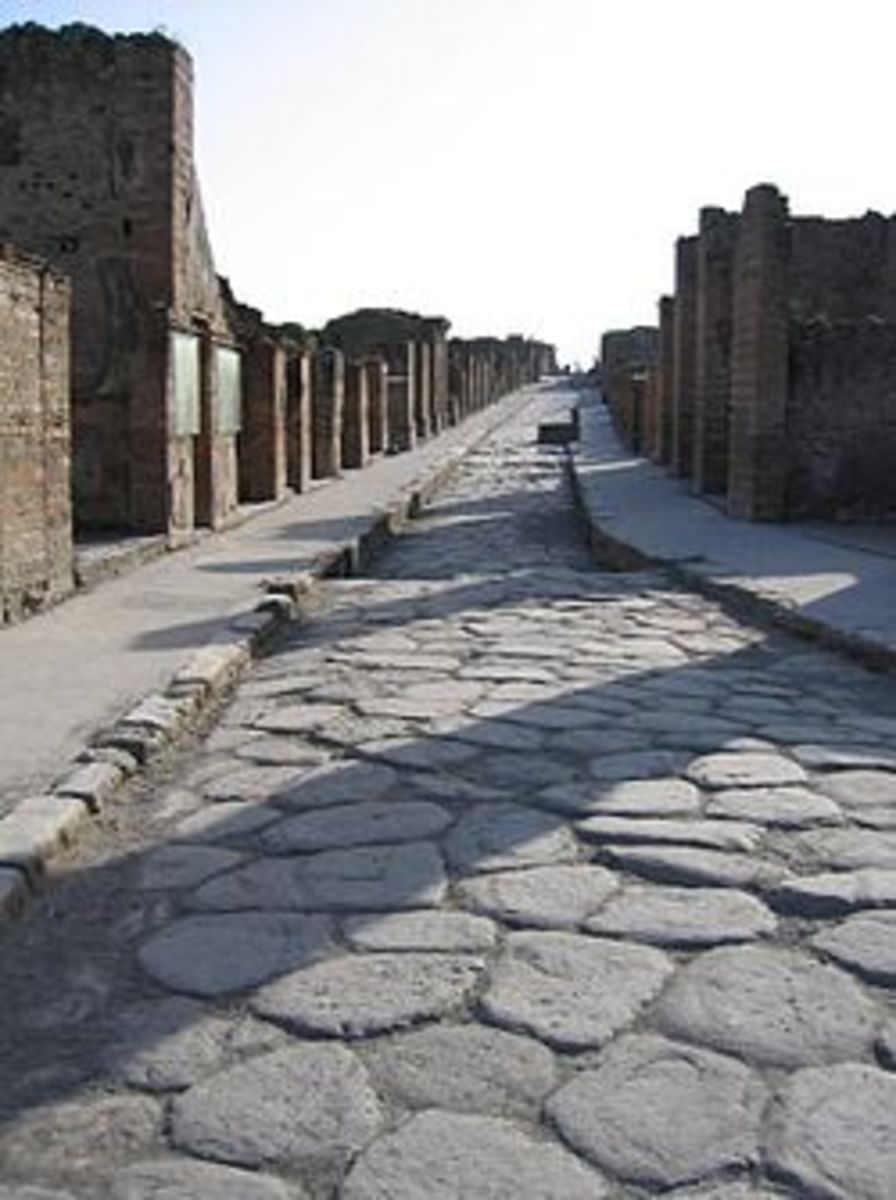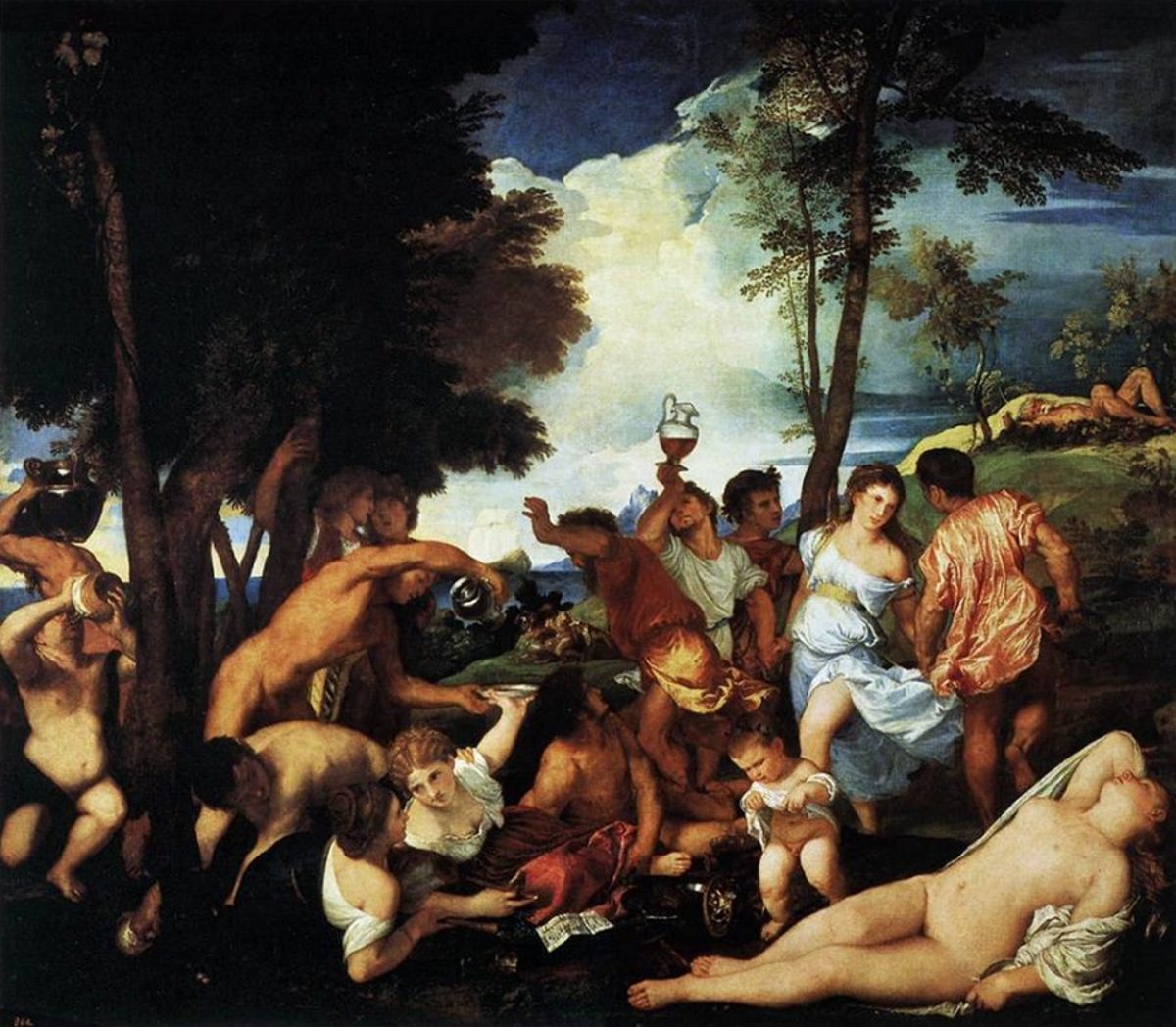Rediscovering the Exodus 4
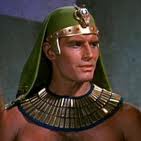
Hopefully, many of you have already begun investigating the book of Yasher for yourself and realize just how important this ancient text is for the understanding of our origins both historically and religiously. One might ask why it was not included in the original canonization of the sacred Tanach and that is a very legitimate question because if a book was actually being used as a reference text, it is surprising that it never made it into the final scriptures which have ultimately changed the world through three major religions.
There are there possible explanations for this failure to include the Book of Yasher. First, it may not have been available at the time having been used as a resource based on oral traditions but never formalized into an actual document. It would not have been unusual after Assyrian, Babylonian, Persian, and Seleukid occupations that the oral traditions never had an opportunity to actually edit the stories into a structured version. But what goes against this possibility is the fact that even in Joshua and Samuel, it is referred to as a Book of Yasher, thereby implying that it had undergone the process of final editing and scripture.
The second possibility is what we now experience in our current age, where there are multiple versions of the Book of Yasher, most obvious hoaxes and therefore they would have presented a problem for the editors in the 2nd Century BCE to decide what was truth and what was fiction. They had neither the investigative tools that we now have, nor the knowledge of period texts and styles that would have supported their decisions that currently exist in our time. So, in order to avoid including a heretical and false text it was easier to exclude them all.
The final possibility is that those canonizing the Tanach refused to include the Book of Yasher because of some of the stories that were included. Some do appear more of a fantasy nature and in conflict with some of the events as recorded in the Torah. For example, in the Book of Yasher, both Abraham and Noah were concurrent rather than separated my many generations. In order to avoid confusion and conflict, it was best to remove the presence of these stories completely. But if I was to make an educated guess, it was not only this reason that they used as their justification to exclude the Book of Yasher but specifically it concerned the stories of Moses that brought them their greatest distress. In my earlier article, http://hubpages.com/hub/The-Ethiopian-Princess , which also happens to be my most popular article with close to a thousand readings, it is clearly evident that there are far more stories about Moses’ origins that have been intentionally kept from us than there are actually included in the Torah. The reasons for this are obvious; they suggest that Moses was neither Apiru (Hebrew), or Shazu, but could have been very easily Hyksos or even Egyptian. These stories are well preserved in the Book of Yasher and they certainly confirm his presence in Ethiopia which took a large part of his earlier life to achieve. So as you read these verses taken from Yasher, I ask that you open you mind and ask, what is far more believable; that a son of slaves walked into the palace of the Pharaoh and made demands on the most powerful regent in the known world, or that a man of equal status walked into the chambers of his father and caused an insurrection that eventually led to the release of a people because Pharaoh feared the consequences of refusing this Prince and his protector God more than he feared the loss of his own power and influence in acquiescing.
Establishing the Timeline
In Chapter 70 verse 1 of the Book of Yasher it reads, “And in the third year from the birth of Moses, Pharaoh was sitting at a banquet, when Alparanith the queen was sitting at his right and Bathia at his left, and the lad Moses was lying upon her bosom, and Balaam the son of Beor with his two sons, and all the princes of the kingdom were sitting at table in the king's presence.” This corresponds well with the legends recorded by Ginzberg, the works of Josephus and other tales of Moses’ early life. Some texts record his royal mother as Bithyia, but I believe this one to be the most accurate. The one on his left would have been a secondary wife, sister or daughter, whereas Alparanith would be the Royal Consort, or primary queen. The name Bathia if it was a Hebrew construct would translate as the House of Yahweh. We can call this a mere coincidence but as I have stated repeatedly, there are no such things as coincidences. Her name had a purpose and it was to inform us that there was a royal wife of Pharaoh that was a follower of this desert God.
But who was Bathia? Do we have any suggestion in Egyptian recorded history of such a woman existing? And if so, why has no one bothered to connect the dots so to speak to explain one of the great mysteries of the Bible. Well, avoiding connecting the dots does make sense if the editors feared the consequences of Moses’ origins being known more than their intent to commit a serious crime of omission. What they failed to comprehend was that it never really mattered who Moses’ parents were, even though they felt they had to prove they were Levites and therefore part of the migrant tribes that entered Egypt at the time of Joseph. That was more important to them than the realization that it mattered not whom God chose, whether he was from the Apiru, Mittani, Canannites, Egyptian, Hittites or whomever. What was truly important was that God found a man that was willing to undertake the greatest burden imaginable, defy odds and persecutions that would have humbled and destroyed most human beings, and do so all because in his heart and in his mind he heard the voice of God and he had no doubts regarding his mission.
To identify the period in which Bathia may have been a secondary queen it is necessary to focus on the name of his primary wife. The fact that we have an actual Egyptian name as evidenced by the ending of her name of ‘nith’ or ‘neith’ as was commonly used in such names as Neithotpe, Herneith, Merneith, Nit, Henite, all suggest that this truly was a royal name. In fact the Egyptian meaning of Neith is either "water" or "weaver." In mythology, this is the name of a mother goddess, the personification of the waters of life which would be interchangeable with the male form or the god Nun that I have already disclosed in http://hubpages.com/hub/The-Ethiopian-Princess as the most likely concealment of Moses’ actual name and how the Rabbis have still preserved the ‘Nun’ in the Hebrew texts for fear of altering sacred scriptures too much. Since Nun was the primordial god of Egypt, or the one that preceded all other gods, then he would have been essentially the one and only for a period of time even in Egyptian religion. So Alparanith could have been easily referring to a time when monotheism had a hold on Egypt. If we divide the word into Al-Para-Neith then we know her name actually means The Province of Neith, which means strictly that she belongs to or was dedicated to Neith. Neith also was thought of being the goddess of wisdom, so this could actually be a characteristic reference to the Queen, meaning the one who is wise, or gifted with wisdom if she had a been given a role in making royal judgements in the court. It is said by some that Tiya or Tiye was the most influential royal queen in Egyptian history, which is quite a statement since Hatshepsut had actually ruled as a Pharaoh all on her own. Egyptian Queen. Tiye was the daughter of Yuya, the King's Lieutenant of Chariots and Master of the Horse, and Thuyu the Superintendent of the Harem of Min of Akhmim and of Amun of Thebes. Tiye was also the niece of Mutemwiya, a wife to Thutmose IV making her Amenhotep III's first cousin and sufficiently royal to be his Great Wife. But it is Tiye's parentage which is a subject to debate and provides us with a significant clue; she was probably not full Egyptian. We know from the study of the mummies found in 1904 that her mother had Egyptian features, but her father did not and from the features it is most likely that her father may have been Apiru, Shazu or similar coming from Mesopotamian origins. . Tiye bore the pharoah at least seven children including Thutmose, Sitamen, Isis, Henut-Taneb, Nebetah, Beketaten, and Amenhotep who is better known to history as Akhenaten. Historians believe that Tiye was the power behind the throne as she acted as her husband's advisor and confidant, playing an active role in foreign relations; so much so that she was the first Egyptian queen to have her name included on official records. Tiye even remained visible during the reign of her son, Akhenaton's correspondence speaking of Tiye's continued political influence. So the picture of Alparanith and Tiye being one and the same has a better probability than most. But what of this second wife Bathia.
From the list of offspring above we know that Princess Nebetah was apparently the fourth daughter of Pharaoh Amenhotep III and Queen Tiye. Once again we have the intial ‘Nun’ beginning the name, as is the possible case with Moses, but only the last part of the name being preserved, or in this case Betah or as the Book of Yasher would have recorded it as Bathia, to give it a more Hebrew sound, the same way that Moses loses it Egyptian orginin when transcribed into its Hebrew form of Mosheh. Though she is not as well known as her sisters, perhaps because she has disappeared from the palace later on, as the story of the Exodus suggests, her name does mean 'Lady of the Palace' or 'Great Lady', which would be unusual for a lesser daughter and one that certainly didn’t marry her brother as was tradition.
In fact, it appears as if Nebetah has been intentionally removed from Egyptian history by her father for some act that she must have committed even though it is clear from her name that he prized her quite highly at one point. All of her sisters appear frequently on statues and reliefs during the reign of their father and are also represented by smaller objects but Nebetah is purposely absent as if any of these items had been destroyed. This removal of her existence is further enhanced by the Egyptian chronicles where she is never referred to as a 'King's Wife' and she was never officially married to her father, Amenhotep III. Yet here she is referred to as the ‘Great Lady’ and was recorded to have the official title of ‘'King's Daughter Whom He Loves.' All these would suggest that she was her father’s favourite, and if Tiye was as powerful as the history would suggest, then she could easily have stopped her husband from officially marrying this daughter, yet still permitting her to sit on the left hand of the throne in the early days, and if as the Exodus story suggest, Bathia went with her attendants and retinue into the wilderness with Moses, then it would make sense that her father eradicated practically every memorial to her existence. And like any favourite daughter, she would have had her every wish granted by her doting father until such time that she defied him and then he would have overreacted as is human nature and declared that she was no longer any child of his.
Young Prince Moses
If the reign of Amenhotep III is correct in fixing the time that Moses existed then what evidence is there to support that Moses was a member of this particular royal dynasty? For this we have to look at Chapter 72 verse 22 and following from the book of Yasher to read, “And Moses was eighteen years old when he fled from Egypt from the presence of Pharaoh, and he fled and escaped to the camp of Kikianus, which at that time was besieging Cush.
23 And Moses was nine years in the camp of Kikianus king of Cush, all the time that they were besieging Cush, and Moses went out and came in with them.
24 And the king and princes and all the fighting men loved Moses, for he was great and worthy, his stature was like a noble lion, his face was like the sun, and his strength was like that of a lion, and he was counsellor to the king.
25 And at the end of nine years, Kikianus was seized with a mortal disease, and his illness prevailed over him, and he died on the seventh day.
26 So his servants embalmed him and carried him and buried him opposite the city gate to the north of the land of Egypt.
27 And they built over him an elegant strong and high building, and they placed great stones below.
28 And the king's scribes engraved upon those stones all the might of their king Kikianus, and all his battles which he had fought, behold they are written there at this day.
29 Now after the death of Kikianus king of Cush it grieved his men and troops greatly on account of the war.
30 So they said one to the other, Give us counsel what we are to do at this time, as we have resided in the wilderness nine years away from our homes.
31 If we say we will fight against the city many of us will fall wounded or killed, and if we remain here in the siege we shall also die.
32 For now all the kings of Aram and of the children of the east will hear that our king is dead, and they will attack us suddenly in a hostile manner, and they will fight against us and leave no remnant of us.
33 Now therefore let us go and make a king over us, and let us remain in the siege until the city is delivered up to us.
34 And they wished to choose on that day a man for king from the army of Kikianus, and they found no object of their choice like Moses to reign over them.
35 And they hastened and stripped off each man his garments and cast them upon the ground, and they made a great heap and placed Moses thereon.
36 And they rose up and blew with trumpets and called out before him, and said, May the king live, may the king live!
37 And all the people and nobles swore unto him to give him for a wife Adoniah the queen, the Cushite, wife of Kikianus, and they made Moses king over them on that day.
38 And all the people of Cush issued a proclamation on that day, saying, Every man must give something to Moses of what is in his possession.
39 And they spread out a sheet upon the heap, and every man cast into it something of what he had, one a gold earring and the other a coin.
40 Also of onyx stones, bdellium, pearls and marble did the children of Cush cast unto Moses upon the heap, also silver and gold in great abundance.
41 And Moses took all the silver and gold, all the vessels, and the bdellium and onyx stones, which all the children of Cush had given to him, and he placed them amongst his treasures.
42 And Moses reigned over the children of Cush on that day, in the place of Kikianus king of Cush.
As was discussed in the article on the Ethiopian Princess, Moses actually came to the land of Cush with an army intent on conquering its major city. There are similarities in that for 9 years Moses fought until such time that the city fell. According to the other story it was the daughter of the Ethiopian King that finally put an end to the war, whereas here it would appear to be tied to the death of Kikianus. At first reading it would appear that Moses was fighting for Kikianus and for some reason the Ethiopian King was attacking his own city. But on closer examination, although it says that Moses went to the camp of Kikianus, it could have just as easily been a mistranslation of the word ‘against’ as ‘in’. The former making far more sense that Moses came as general and counsellor for Pharaoh in a war against Kikianus’s city which he eventually took after nine years. But most importantly is that after the death of the Cushite king, Moses has himself proclaimed as king or Pharaoh of Upper Egypt. The reference to ‘his treasures’ makes us well aware that Moses has taken the glory all for himself and not for his Pharaoh.
The Nubian War
Do we have anything in Egyptian history that lends veracity or is comparable to this history provided by the Book of Yasher? The answer is obviously yes. It is recorded that before Akhenaton, Egypt was to be ruled by his brother since Crown Prince Thutmose was the eldest son of Pharaoh Amenhotep III and Queen Tiye. He is also knowns as Djutmose, Thutmosis and Tuthmose. His name means "Thoth is Born" or "Child of Thoth." Thutmose disappears from Egyptian records completely somewhere between year 27 and year 33 in his father's reign, so he never became a Pharaoh, otherwise he would have been Pharaoh Thutmose V. One can say that he probably died, but that would not explain why his tomb was not discovered with or close to those of the rest of his family. So very little is known about this doomed Prince Thutmose, that it would suggest that he too, like Bathia was erased from the records intentionally. But during the short period of his life that was, recorded, he was a very important member of the royal family, clearing being bred to be Amenhotep III's successor as he was a member of the priesthood of Ptah in Memphis, most likely being the High Priest and had a role in the military though this is not elaborated upon. Prince Thutmose had a pet cat, Ta-Miu ('the Kitten' or 'the lady cat'), who, like many animals in Ancient Egypt, was mummified and placed in her own sarcouphagus when she died. The cat sarcophagus of Prince Thutmose, states that he was indeed the eldest son of Amenhotep III giving his current title of 'Crown Prince at the time of the cat’s death. Thutmose is also attested by a total of 7 pairs of calcite and pottery vases in the Louvre. But the cat is most interesting in that it was buried within his mother’s tomb, that of Queen Tiye, who died long after her husband, almost as if this was the last possession or memory of a son that she had and she wanted to cherish it even after death. One would think that if the son had died naturally, there would have been many items that the Queen would have selected to take into her tomb with her having preserved a son’s memory as best as she could as any mother would do. But all she had left was the cat that he himself had mummified. Everything else was gone, but with her husband dead 12 years earlier, he could not stop her from having this last item of a cherished son buried with her.
Building on this connection of the Crown Prince and the military campaigns of Moses, we do know that Amenhotep III did have campaigns in Nubia, or Cush to the South. His army we can presume was under the direction of the man appointed as his Viceroy of Cush, one Merimose. Obviously, this is a very different name from Thutmose but it must be remembered that Egyptian members of the royal family had numerous names by which they were called. And since Meri-mose translates as ‘Beloved Son’ there is no reason why these two men were not one and the same. As to how this son could be both Thutmose and Nunmose as I consider the case, then as mentioned each Pharaoh had five different names but it is of interest that Toth the god referred to in Thutmose was considered the tongue of the chief god, as well as the messenger. Now this Merimose, Viceroy of Cush was found in a burial tomb for servants of the king and his mummy currently lies in the British Museum. And though it says Royal son, this Merimose was not a member of the royal family, nor was he treated as such in his burial so it is clearly not the same man as Crown Prince Thutmose, whom also would have been Merimose, or the beloved son. So the presence of this mummy in no way excludes the fighting prince of the Book of Yasher from being the fighting prince of Amenhotep’s army.
So more importantly, the clarification of this
issue of warfare in Ethiopia is paramount as it should connect this Prince of Egypt with the
Moses in the Hebrew stories being proclaimed a king in Cush. We know that in 1375 BCE there was an ending
to a revolt by the Nubians against Amenhotep III, the 27th year into
his reign if counting from the time he was co-regent with his father. How interesting that Moses would have been 27
years of age when he finally took the city and became king of Cush according to
the Book of Yasher. This war in Cush is the only recorded military activity undertaken
by Amenhotep III army and it is only commemorated on three rock-carved stelas
found near Aswan and Sai Island in Nubia. Hence, it was not an undertaking of
such tremendous magnitude that it was commemorated with the building of massive
temples such as was the case of Amenhotep’s father and also by later Pharaohs
such as Rameses II. Instead it was
merely marked within the affected territory itself, clearly indicating that the
Pharaoh never had an actual presence during the skirmish and also that it was
not given the status of a major threat to Egypt itself that Amenhotep could
claim to be the Defender of the Two Lands.
The official account reads as follows:
“Regnal Year 5, third month of Inundation, day 2. Appearance under the Majesty of Horus: Strong bull, appearing in truth; Two Ladies: Who establishes laws and pacifies the Two Lands, King of Upper and Lower Egypt: Nebmaatra, heir of Ra; Son of Ra: [Amenhotep, ruler of Thebes], beloved of [Amon]-Ra, King of the Gods, and Khnum, lord of the cataract, given life. One came to tell His Majesty, "The fallen one of vile Kush has plotted rebellion in his heart." His Majesty led on to victory; he completed it in his first campaign of victory. His Majesty reached them like the wing stroke of a falcon, like Menthu (war god of Thebes) in his transformation...Ikheny, the boaster in the midst of the army, did not know the lion that was before him. Nebmaatra was the fierce-eyed lion whose claws seized vile Kush, who trampled down all its chiefs in their valleys, they being cast down in their blood, one on top of the other.”
The title of the rebellious king of Cush is the ‘fallen one.’ Fallen from where one might ask. Fallen from grace, from honour, but then that would imply that he had a high status to begin with. Perhaps it was not fallen in any of those senses but to be taken literally as in he has fallen down dead. Whoever he was, he had underestimated Amenhotep’s general who came at him like a lion. Or in the sense of a nine year campaign, a general who refused to give up and was relentless in his pursuit to destroy the city. This rebel is given a name or an insult being Ikheny, the boaster but this could easily be a play upon his actual name as recorded in the Book of Yasher. Kikianus is obviously a Greek stylized rendition of the name, and in most likelihood it would have ended in a vowel, such as ‘i’. In that situation we’d have the name Kikiani. If we remove the first letter k then we have a name that is very similar to Ikheny. In fact it would be almost indistinguishable. This King of the Cushites did not know this lion before him, this Lord of Ra’s Ma’at that clawed his way through Kush until he finally conquered it. This would suggest that the general was a young unknown, with no reputation that preceded him. And because he was unknown and underestimated he was able to take the country piece by piece, eliminating each chieftain of the Nubians one by one until the finally laid siege to the king’s city. But it is clear that although the other chiefs that had fought under the banner of this rebel were slain, the king of Cush, the man responsible for the rebellion was never caught or slain. Just like Kikianus in the Book of Yasher, neither of these was possible because the king died of other causes during the siege at which point the people threw open the doors and ended the war by surrendering. Hardly a victory worth commemorating with a major building project to the north, and certainly not one to be commemorated if this general-Prince happened to place the crown upon his own head and place himself in direct opposition to Amenhotep III. It would have been something that the Pharaoh would have made certain never got recorded in his own royal chronicles but he would not have been able to eradicate the steles set up independently by his general far to the south near Aswan.
In Conclusion
Though one might claim that the historical data listed in this article in no way confirms or establishes that the time frame and family connections of Moses as being part of the 18th Dynasty in Egypt, it must be appreciated that it does not deny it either. In fact, it is the only historical time period in which the almost all the events of the Exodus have a correlating connection to actual events. As I stated in http://hubpages.com/hub/Rediscovering-the-Exodus-3 my role is to make you think, to open your minds and appreciate that in the Karaite manner, the Torah is a compilation of historical truths that merely need to be interpreted in their proper context. And as such, the true miracle is that Yahweh not only made them happen for a specific purpose but that when required there were men of incomparable stature that rose to the occasion, defied incredible odds, and in the end overcame impossible barriers because God imbued them with a faith that could move mountains. And the history that we uncover together only emphasizes how incredible those feats may have been.
